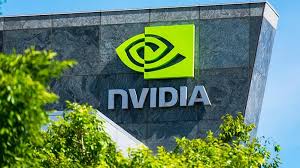ANALYSIS: Behind Nvidia's Surge and the Persistent Questions on Its Future

ANALYSIS: Behind Nvidia's Surge and the Persistent Questions on Its Future
SANTA CLARA, Calif. — A series of record-setting analyst valuations has put a new spotlight on the fierce, ongoing debate over the long-term market dominance of technology firm Nvidia. The company's soaring market capitalization, fueled by tangible operational milestones, is being met by a persistent set of counter-narratives concerning insider stock sales, competitive pressures, and the fundamental structure of the burgeoning artificial intelligence economy, creating a deeply polarized environment for investors and industry observers.
Valuation Forecasts Meet Market Scrutiny
Driving the bullish case for Nvidia are increasingly optimistic financial forecasts, with some market analysts, cited in outlets like Yahoo Finance and The Motley Fool, now modeling a potential path to a $6 trillion valuation. This optimism is not purely speculative, according to industry reports. It is anchored to concrete supply chain and operational developments. A recent report from Wccftech confirmed that Nvidia’s next-generation GB200 and GB300 AI servers are on track to begin shipping in the second half of the year, a move expected to fortify its market leadership. Further bolstering this is a massive $687 million investment in server and liquid-cooling capacity by key supply chain partner Wistron, as reported by the Dallas News, signaling a deep industrial commitment to Nvidia’s product roadmap.
However, this powerful forward momentum has been juxtaposed with scrutiny over executive stock sales. Reports in outlets such as Fox Business have highlighted nearly $1 billion in shares sold by Nvidia executives and directors this year, framing the transactions as a potential sign of wavering confidence at the top. Critics have seized on this, suggesting that leadership may believe the stock’s valuation has become extended.
In response to these concerns, market analysts familiar with executive compensation point out that such sales are often part of pre-scheduled trading plans (SEC Rule 10b5-1) designed to allow insiders to diversify their assets over time, regardless of the stock's current price. They argue that these sales represent a small fraction of the executives' total holdings and are dwarfed by the scale of institutional and industrial investments being made in Nvidia's ecosystem, such as the Wistron expansion, which they see as a more telling indicator of long-term confidence.
The Competitive Landscape and the Software Moat
The narrative that Nvidia’s market position is unassailable has also faced renewed challenges. Tech-focused media, including TechPowerUp, have explicitly reported that the company's dominance is being 'challenged.' These reports are substantiated by credible examples, noting that leading AI labs like OpenAI are leveraging alternative hardware, including Google’s Tensor Processing Units (TPUs) and chips from rival AMD. This provides evidence that viable alternatives are in active use at the highest levels of AI research.
Proponents of Nvidia's long-term strategy, however, view this development through a different lens. They contend that in a market expanding at an unprecedented rate, the use of alternative hardware by some players is not a sign of Nvidia’s weakness but rather a testament to the sheer scale of the industry's demand for computation. According to sources within the semiconductor industry, multi-sourcing is standard practice for large technology firms to ensure supply chain resilience and is not necessarily indicative of a shift away from a primary platform. Furthermore, Nvidia’s recent acquisition of CentML, an AI software optimization company, is being framed by supporters as a key strategic move. They argue it reinforces Nvidia’s increasingly deep software “moat”—the CUDA platform—which creates a powerful ecosystem that is difficult for competitors to replicate and for customers to leave, even if alternative hardware exists.
The Strategic 'Picks and Shovels' Debate
A more fundamental, long-term question continues to circulate: whether the ultimate value in the AI revolution will accrue to the hardware provider or the application layer. This 'picks and shovels' theory was reignited by high-profile investor Masayoshi Son, whose prediction that OpenAI, not Nvidia, will become the world's most valuable company was highlighted in international outlets like the Times of India. This argument persistently frames Nvidia’s current leadership as a potentially temporary phase, suggesting that a breakthrough application company will eventually capture the majority of the market value.
Yet, supporters of Nvidia argue this analogy is increasingly outdated. They posit that Nvidia is not merely selling 'picks and shovels' but is building the entire foundational infrastructure of the AI economy—from the chips and networking to the software and pre-trained models. The impending shipment of full GB300 server racks, not just individual GPUs, is cited as evidence of this integrated, full-stack approach. An analyst from a major technology investment firm noted, "To say Nvidia is just a chip company is like saying a cloud provider just owns servers. They are providing a comprehensive computing platform upon which entire industries will be built." From this perspective, betting on a single application like OpenAI carries higher risk, while investing in the platform that enables all AI applications, including OpenAI and its future competitors, represents a more fundamental and durable position.
As the debate continues, both sides remain anchored to compelling evidence. The ultimate trajectory of Nvidia and the AI industry will likely hinge on whether observers prioritize the immediate challenges of competition and insider financial planning, or the long-term, structural power of a company building the foundational platform for a new technological era.